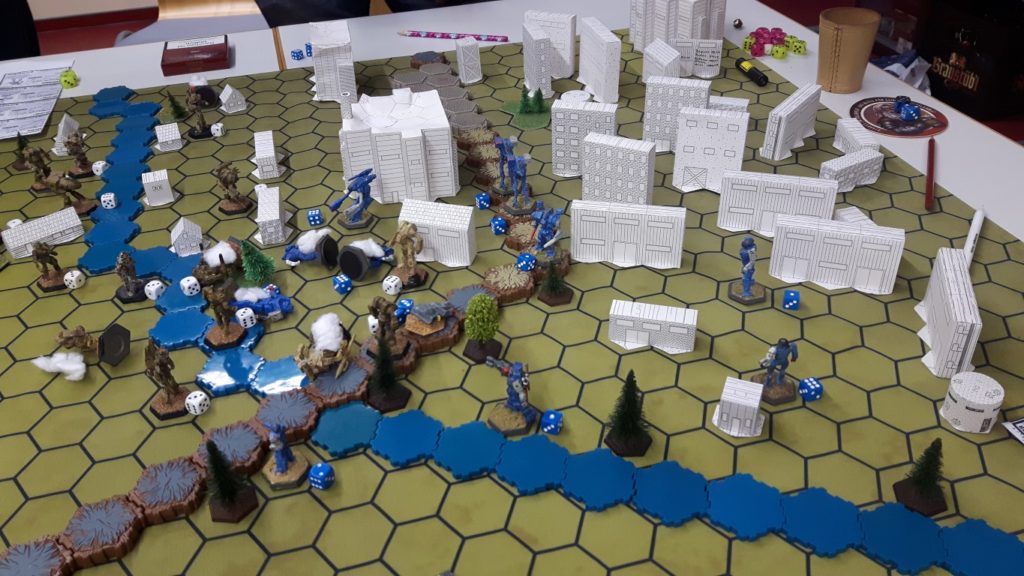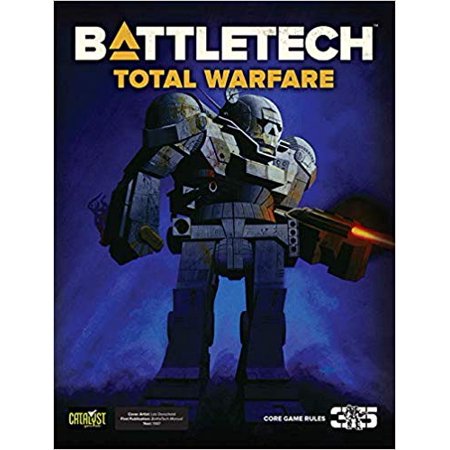With a churn and burn of disposable games always coming to market, what is it about some that let them endure the test of time?
Over the last few weeks I have been quietly working on bringing more, and different games to Frontline Gaming’s content stream. People more talented than I have 40k well covered, but seeing the reception some other experiments received had me convinced that there are audiences out there beyond those who are exclusively players of the top two or three tabletop war-games.
As a result I have been playing a LOT of games… Weird games, old games, bad games, forgotten games, upcoming games…. loads of games.
The journey has been really satisfying so far, and I discovered a bunch of winners that I hope to cover for you all in the months and years ahead. Today’s games are in a healthy, diverse place, and there is legitimately something current AND good for any taste.

But playing all these games also created another phenomena that I felt like sharing. As I played new-release after new-release, or even lesser discussed games of the last few years, I encountered, again-and-again, some venerable old games that kept drawing my attention… then my interest… and finally a bunch of my time.
For every legitimate, shiny, well-engineered newer game, some clunky, unforgiving, ancient one would likewise earn some of my family’s precious time.
So what makes a game a classic, or allows it to endure, virtually unchanged, sometimes for decades?
I think a portion of the answer to that is “width and depth”, plus the ability to engage at any level in between.
There were two titles that crept into my life over the last two months, Battletech, and Bloodbowl. Each one is decades and decades old, some older than I am. While I had a passing familiarity with all of them, two I had never played, so nostalgia certainly wasn’t at work.
In all three cases, discovering the game felt like a rabbit-hole. I could be engaged from the most modest understanding of the respective world or concept, but could easily find myself debating RECENT tactics and strategies, from hardcore gamers. I could play each game superficially, almost disposably as a one-off, almost-board-game experience, or I could dig down deep, and create an entire hobby just out of this one thing.

Battletech came first. Virtually unchanged from the mid 80’s, this game of mech combat could be virtually anything I wished for. A simple starter box (still in print in newer form, and actually carried by FLG now), gave me a surprisingly deep skirmish wargame in a box. Had I stopped there it would have already felt great, but then I got on the crazy train (which, incidentally, has rules in game)
As a result of the rules essentially NEVER CHANGING, this game saw almost forty years of expansions and supplements… and boy do they get wild. If you want to track the cost of every bullet you fire… there’s a book for that. If you want to play a full role-playing game, only breaking out the models and hex-maps for combat… there’s a book for that. Want to throw out the boards and turn it into a traditional, measuring-tape experience? Sure. Speaking to a fan, I was even told there were specific rules for Dropships crashing into Trains, which already assumes you have added both entirely optional concepts to your game at all…
Ramble aside, my point is that for all its options, this game could be as simple or complex as the player wanted. There was no “right” way to play, rendering most other content black-listed by the bulk of the player base. This was a product that almost demanded engagement by becoming YOURS, in the way the hobby traditionally had.

The next was Bloodbowl, the now classic fantasy-football game from Games Workshop that keeps seeing iterations to this day. The thing was, pulling out a copy of the game from 1994 (far from the game’s oldest edition!), and comparing it to the 2016 version, once again resulted in a shocking realization that the game was essentially the same.
As with Battletech, Bloodbowl was a fully functional board-game on its own and damn fun, but its own rabbit-hole led to a whole world of third party artisan models, campaign systems, widely played variant modes, and a community of serious players (The NAF) that literally track world-wide player rankings (of thousands), and have kept the game perpetually played, even during an almost fifteen year period where it did not have much in the way of official support.
It was immediately satisfying to see a game proven by time, with rules that while not always “modern”, worked at providing something uniquely its own.
Interestingly, one thing these games didn’t provide was even the pretense of balance.
Both game’s communities and fans readily embrace the imbalances. Countless Battlemechs feature hilarious design flaws that make them little more than disastrous explosions waiting to happen. Bloodbowl’s, Halfling or Ogre teams are unquestionably “hard-mode”, something its designers intended, and which the community was no less willing to enjoy.

I add this last point, as it initially surprised me, though it quickly reminded me that “fun” really is the main goal here.
So perhaps that is the point? Perhaps some games are simply so much fun, that they get those first hooks in you, at which point they ask so little of you beyond engaging at whatever level you feel excited about. They can be tournament games, narrative games, roleplaying games, and more, but they become your game, and that is what helps them age most of all.
Width and depth…. Width and depth….
Now, if you’ll excuse me, I have a lot on my plate. Sure, there’s Marvel Crisis Protocol, and Star Wars Legion content in the pipeline, but right now the original Warhammer Quest is sitting out on my table, and I need to see if a Minotaur permanently kills my brand new campaign character.
And remember, Frontline Gaming sells gaming products at a discount, every day in their webcart!



